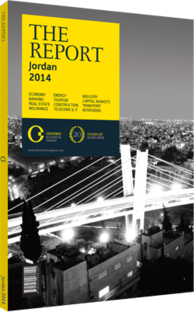The development of the country’s sharia-compliant banking sector
Three of Jordan’s domestic banks operate on an exclusively Islamic basis, forming a vibrant sharia-compliant segment within a sector that is among the most well-established in the region. The Islamic finance industry in Jordan has come a long way in its 36-year history.
Background
Bankers and Islamic scholars in Jordan began to investigate the possibilities of Islamic banking almost as soon as Egypt and Pakistan established their own such institutions in the 1950s and 1960s. The government played an early role in the segment’s development, decreeing in 1972 that orphans’ funds should be invested in interest-free transactions.
But the establishment of Jordan’s first Islamic bank can largely be attributed to one man, the Jordanian economist Sami Hamoud. After studying in Egypt in the 1970s and making important contributions to the academic conversation which then surrounded sharia-compliant finance, Hamoud returned to Jordan to turn theory to practice. Having gained financial backing from members of the Saudi royal family, he turned his attention to allaying government concerns about allowing a full-fledged Islamic bank to be established.
He met the challenge through personal lobbying and the establishment of a “preparation committee” for the putative institution, which quickly formulated a convincing argument for sharia-compliant financing. According to the committee, many Jordanians were holding back from dealing with banks due to the interest fees that conventional lenders apply to loans and deposits. The result, it said, was that a high percentage of funds in Jordan were idle.
In time, the committee and its supporters succeeded. The request for a licence was granted, and in May 1977 the office of the prime minister issued a decision allowing for the establishment the nation’s first Islamic bank, based on a special law that accounted for the differences between conventional and Islamic finance. In 2012 the kingdom endorsed its sukuk law, which will enable the government to issue sukuk and access the large pool of financing available by Islamic banks. This should help ease access to financing in the kingdom and promote economic growth and development.
The Sector Today
The opening of Jordan Islamic Bank (JIB) in 1978 marked the beginning of the modern Islamic banking sector. The new institution was licensed to carry out banking, financing and investment business operations in accordance with the principles of sharia and the provisions of the JIB’s “special law”. With total assets of JD3.1bn ($4.37bn) as of the first half of 2013, JIB is the largest Islamic financier. It also has the most equally distributed loan book: about 38% of its financing operations occur in the retail segment, while 33% goes to government financing, 22% to large companies, and 7% to small and medium-sized enterprises (SMEs). Its profits in recent years have been robust; in the first half of 2013 it posted 26% growth in deferred sale revenues and a 21% rise in assets and revenues from ijara (Islamic leases). These results helped drive a net income of JD24.7m ($34.9m) in that period, compared to JD19m ($26.8) for the same period in 2012.
Jordan’s second-oldest Islamic bank, the Islamic International Arab Bank (IIAB), has yet to list on the Amman Stock Exchange, and so is not required to release its financial data. Having begun operations in 1998, the IIAB now offers a full range of banking services, including retail, corporate, SME and Treasury products. Its most recently published data, for fiscal year 2012, showed total assets of about JD1.2bn ($1.69bn), making it the second-largest Islamic bank in the country.
The second Islamic bank to list on the country’s stock exchange, Jordan Dubai Islamic Bank, began operations in 2007, as the child of a restructuring of Dubai Islamic Bank and its partner Jordan Dubai Capital. With total assets of JD526.1m ($743.2m) as of the first half of 2013, it is a relatively small player in the market, although it has been increasing its stock of capital in recent years, reaching JD100m ($141.3m) in 2012 from JD34.5m ($48.7m) in 2005. It has also seen strong profits, posting 35% growth in deferred sales revenues in the first half of 2013 and an 85% rise in leased asset revenues.
You have reached the limit of premium articles you can view for free.
Choose from the options below to purchase print or digital editions of our Reports. You can also purchase a website subscription giving you unlimited access to all of our Reports online for 12 months.
If you have already purchased this Report or have a website subscription, please login to continue.

